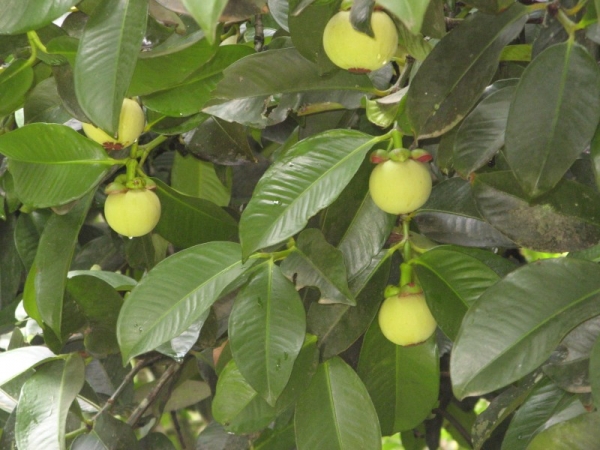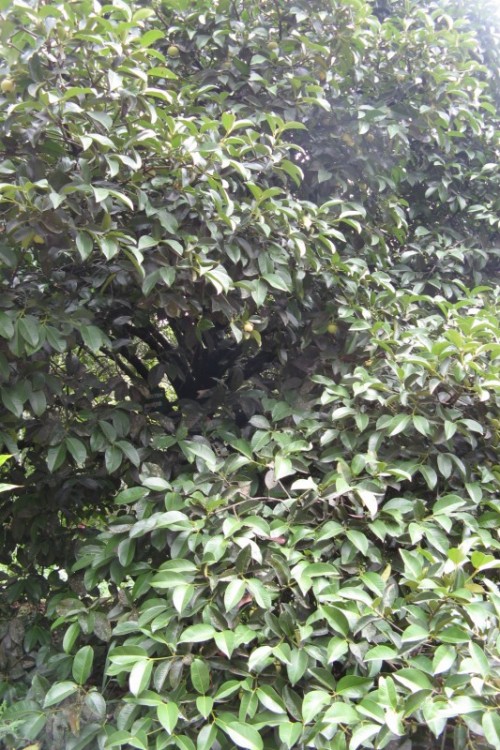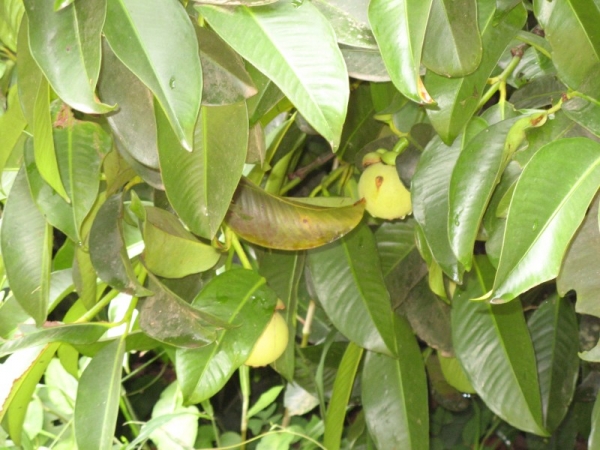Not many of us had heard the existence of Mangosteen fruit, which is a native of South East Asia. Highest producing country is Thailand. I tasted this fruit for the first time in 2008 in Pondicherry and immediately fell in love with it.
The botanical name is Garcinia mangostana and belongs to Clusiaceae family. It is an evergreen tree and is now introduced in many parts of the world like Colombia, SriLanka, Kerala in India, Puerto Rico and Hawaii.
I had the opportunity of seeing the trees in RARS – Wayanad, Kerala and Singapore Zoo. Mangosteen tree grows to a height of 82 feet. The bark is dark brown and it contains a gummy latex.
The leaves are green, glossy, opposite, oblong, thick and leathery about 4 to 10 inches long and 2 to 4 inches wide. Young leaves are pinkish.
Flowers bloom in clusters of 3 to 9 at the branch tips. There are four fleshy petals, Green with red spots on the outside and yellowish-red inside.
They bloom in clusters of 3-9 at the branch tips; there are 4 sepals and 4 ovate, thick, fleshy petals, green with red spots on the outside, yellowish-red inside, and many stamens though the aborted anthers bear no pollen.
The fruit is green when young and turns deep purple when ripe with a prominent calyx at the stem end like a rosette. The deep red purple is a rind (pericarp), when peeled off reveals white segments arranged like Orange segments. The endocarp, which are the white fleshy segments (4 to 8) are fragrant, sweet, juicy, fibrous, and tangy.
The largest segment will have a fully developed seed, which is almond-shaped and unpalatable.
If the pericarp is hard, then it is for sure that the fruit inside has gone bad.
Queen Victoria was so fond of Mangosteens that she offered a prize to anyone who could bring them to England without deterioration.
Propagation:
Mangosteen is usually propagated by seeds. Seeds are soaked to germinate and the plant is kept in the nursery for 2 years. When they reach 12 inches in height they are transplanted in well drained soils with high moisture at a distance of 40 meters from each other. The ideal temperature range for growing and producing fruits is between 25 °C and 35 °C with a relative humidity over 80% and well distributed rainfall.
Mangosteen trees bear fruits in as little as 5–10 years, and young trees bear up to 300 fruits whereas mature trees bear 500 fruits. 35 years and above old trees yield more than 3,000 fruits. Harvesting is done when the fruit turns purple.
Uses:
Mangosteen is eaten as is and is also used to cook preserves, and in cocktails.
Various parts of the plant are used in traditional medicine, mostly in Southeast Asia; it is used to treat skin infections, wounds, dysentery, tuberculosis, cancer, arthritis, menstrual disorder, and urinary tract infections. It is low in calories, rich in dietary fiber, good amount of vitamin C, antioxidants
Wood of Mangosteen tree is used to make spears and cabinets in Thailand. The rind is used to tan leather in China.




